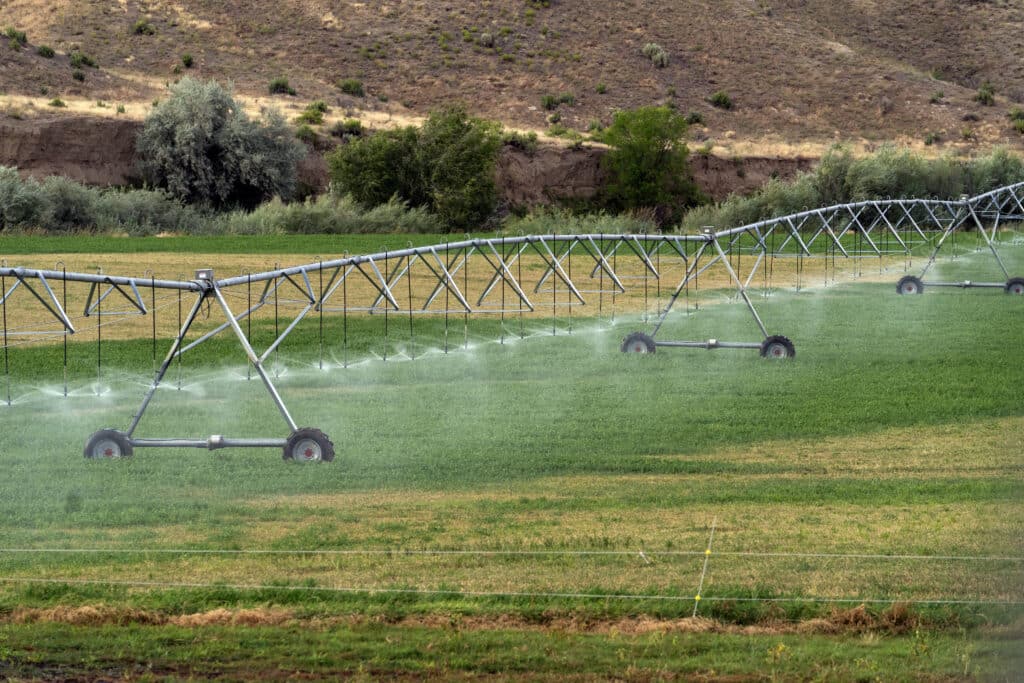Environmental Protection Agency supports The Freshwater Trust with $5.6 million grant
October 2, 2023
The U.S. Environmental Protection Agency (EPA) has selected The Freshwater Trust (TFT) to support stakeholders with a toxics reduction program for the Mid-Snake River watershed. The five-year agreement will provide $5.6 million to coordinate funding and implement agricultural best practices in Idaho and Oregon to reduce runoff that fuels the production of toxic methylmercury in waterways.
As an EPA Toxic Reduction Lead (TRL), TFT will establish and coordinate a committee of funders and implementers to prioritize and install high-impact irrigation upgrades on agricultural fields to reduce runoff into the Snake River. Agricultural runoff contains phosphorus and inorganic mercury, which can be converted to methylmercury, a toxic form of mercury that is easily absorbed by organisms such as fish. Methylmercury leads to brain disorders and heart disease in humans who consume contaminated fish.
“Agricultural runoff impacts many communities, including farmers, tribes, and those who recreate on the river,” said David Primozich, Vice President of Water for TFT. “High methylmercury levels pose a health risk to tribal communities who have advised members not to consume culturally significant white sturgeon.”
“We need a watershed-wide funding and implementation effort to address the sources of mercury that get into the river and the processes that fuel production of this methylmercury problem.”
The opportunity for irrigation improvements is huge: the U.S. Department of Agriculture’s (USDA) latest Irrigation and Water Management Survey (2018) shows that 837,000 acres (59% of farms) remain flood irrigated in Idaho. And many irrigators are interested in making a change.

But several barriers preclude the right amount of existing funding from making it to the right projects at the right times, which means that conversions happen too slowly and disjointedly to add up to meaningful results.
“Misaligned funding incentives and timing often keep interested farmers from saying yes to these upgrades,” said Tim Wigington, Vice President of Finance & Policy for TFT. “It’s simply not anyone’s job to solve the funding, timing, and coordination challenges that currently inhibit project adoption at speed and scale. We’re excited EPA is giving us the opportunity to demonstrate a better path forward that can benefit many communities.”
Over the next five years, millions of dollars in funding from this program will be awarded to farmers and irrigators to convert their existing flood or gravity flow irrigation systems to pressurized or drip irrigation systems.
“The Freshwater Trust is a critical partner in supporting the health and vitality of the Snake River,” said EPA Regional Administrator Casey Sixkiller. “This funding provides urgently needed resources to reduce pollution and build on the successful collaboration among the many stakeholders — state and local government agencies, Tribes, conservation groups, farmers, and others who are working to protect and restore one of our nation’s most important waterways. EPA is proud to support to this effort.”
TFT has been analyzing the runoff and drainage patterns across the Mid-Snake watershed for years and has developed decision support tools to identify the specific fields with the highest potential to reduce runoff for the least cost. These analytics highlight the best candidates for irrigation upgrades, which local partners can then reach out to with simple, compelling financial offers.
To further scale up the program, TFT will develop a system to track multiple environmental benefits from the irrigation upgrades and attract additional funders interested in these outcomes.
“This grant will allow us to help coordinate funding streams that all care about the same kinds of outcomes but for different reasons focus on different aspects of the problem,” said Primozich. “We need buyers of all stripes—whether they care about runoff reductions, greenhouse gas reductions, toxic problems, supporting farmers, or supporting tribes—to come together around an integrated system that can deliver results.”
The funding for this opportunity comes from the Columbia River Basin Restoration Program, which Congress added to the Clean Water Act in 2016. The Program received $79 million in the Bipartisan Infrastructure Law (BIL) in 2021, which allows the EPA to award significant grants throughout the Basin to reduce toxics.
Since 2012, TFT has worked with state and federal agencies and utilities to assess and design watershed-scale temperature and sediment load reduction strategies in response to Total Maximum Daily Load (TMDL) limits that establish the highest amount of pollutant a surface water body can receive and still meet water quality standards. TFT worked with EPA, Idaho and Oregon Departments of Environmental Quality (DEQ), and Idaho Power Company to develop the now-approved Snake River Stewardship Program (SRSP), which will generate nearly 100 miles of new riparian restoration and convert more than 8,000 acres of flood-irrigated fields to sprinkler irrigation.
#EPA #Idaho #Idaho Power Company #phosphorus #runoff #Snake River
